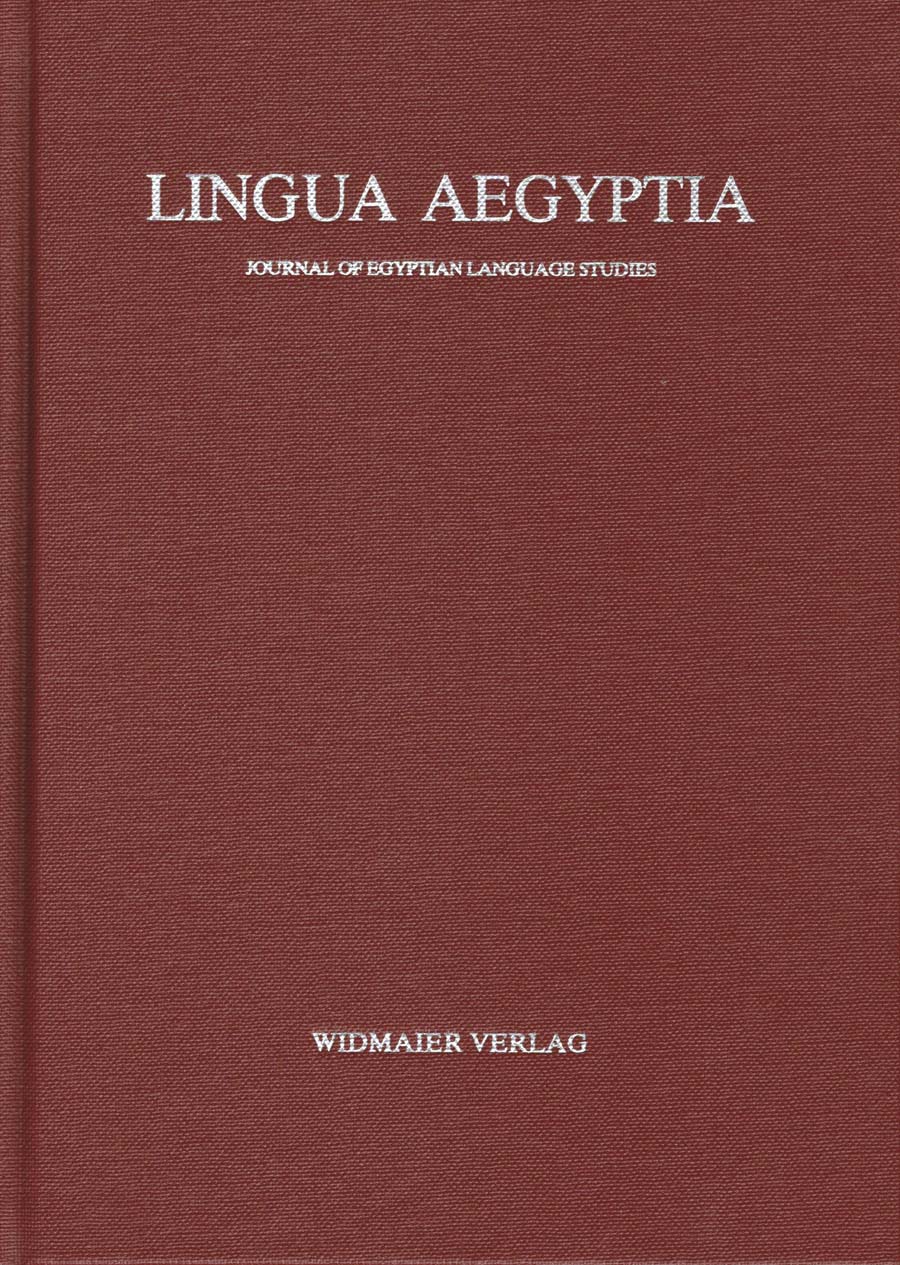Articles
Marc Brose,
Formale Diskussionen zum sDm.n=f und zum „indikativischen“ sDm=f
1-40
This article discusses some formal problems of the sDm.n=f and the indicative sDm=f form of the Older Egyptian language step. It is demonstrated that the classic theory (of Sethe, Gardiner, Westendorf) of the development of the sDm.n=f out of a clausal possessive formation (a nominal sentence sDm-n=f-jtj “heard is him the father” → “he has heard his father”) has more probability as diverse ergative theories (by Edel, Grandet & Mathieu, Oréal, Werning). Furthermore it is shown that the assumption of E. Oréal that the indicative sDm=f of Old Egyptian is not more than a special use of the Pseudoparticple is most likely not correct, and also that the best candidate for the verbal base of the sDm.n=f would be the Afroasiatic perfect participle, which is as such productive in Akkadian, but underwent semantic change to a passive participle in Egyptian.
Roberto A. Díaz Hernández,
Die Weiterentwicklung der offiziellen Sprache in der 2. Zwischenzeit
41-65
This paper deals with the development of the official language of the Middle Kingdom into the Second Intermediate Period. The graphic, morphological and verbal system of the historical-biographical texts from this Period is examined and compared against the one in such a literary text as the Westcar Papyrus in order to conclude that there is a continuity in the use of the official language during the Second Intermediate Period, since the same sort of documents from the Middle Kingdom feature „traditional speech“ in historical-biographical texts and „artistic speech“ in literary texts. Furthermore texts from this period are characterized by the use of early neologisms („Frühneuägyptizismen“) originating either from „bureaucratic speech“ in documentary texts from the Middle Kingdom or from Late Egyptian.
Mahmoud El-Hamrawi,
Das transitiv-aktivische und passivische Pseudopartizip-Perfekt 1. Sg. ohne vordere Erweiterung in der Sprache des Alten und Mittleren Reiches
67-88
The following paper deals with the transitive active and passive pseudoparticiple perfect in the 1st person without a front extension (Non-enclitic particle) in the language of the Old and Middle Egyptian. It has the meaning of an active and passive historical perfect in its predicative function. It is not only its meaning but also its formation and ending, which) are examined through the non-literary and literary texts. The study focuses on the analysis of the syntactic-semantic behavior of the pseudoparticiple perfect in the 1st person, using different texts from Old and Middle Egyptian.
Carsten Peust,
Der Lautwert der Schilfblatt-Hieroglyphe (M17)
89-100
I endorse the view that ‹¦› originally represented /ʔ/ (or a vocalic onset) rather than /j/. In the apparent examples of /j/ preserved in Coptic such as ¦t¦ „father“ > ⲉⲓⲱⲧ, almost exclusively made up of nouns, /j/ does not continue the Egyptian ‹¦› but rather originates from a misdivision of the proclitic definite article, an event that occurred probably in the early New Kingdom.
Joachim Friedrich Quack,
Nochmals zum angeblichen stammhaften Imperativ **|y+ „komm!“
101-110
It is often assumed that the Egyptian verb |w+/|y+ ‘to come’ had, beside its normal imperative form m|, also a rare by-form based on the regular verbal root. In a previous article, I had rejected this assumption. My claim has provoked some reactions, especially by Simon Schweitzer, which have tried to uphold the older position. A re-examination of all evidence adduced in favour of postulating an imperative **|y+ ‘come’ shows that different, more convincing solutions can be found and that there is no need to postulate such a form.
Sami Uljas,
On Clitics in Earlier Egyptian
111-149
This paper provides an overview of the morpho-syntax, semantics, and evolution of Earlier Egyptian clitics – i.e. phonologically “defective” expressions that require a host to which they may attach. A broad formal characterisation thereof is followed by a more detailed look at the syntax of clitics with respect to their hosts as well as within phrases and clauses. After this a semantic division of Earlier Egyptian clitics is outlined, and the possible status of the so-called suffix-pronouns and the passive element t(w)/tw is reconsidered. Finally, the diachronic fate of the Earlier Egyptian clitic system is briefly surveyed and proposed to represent a symptom of a more general language-historical trend observable in Egyptian.
